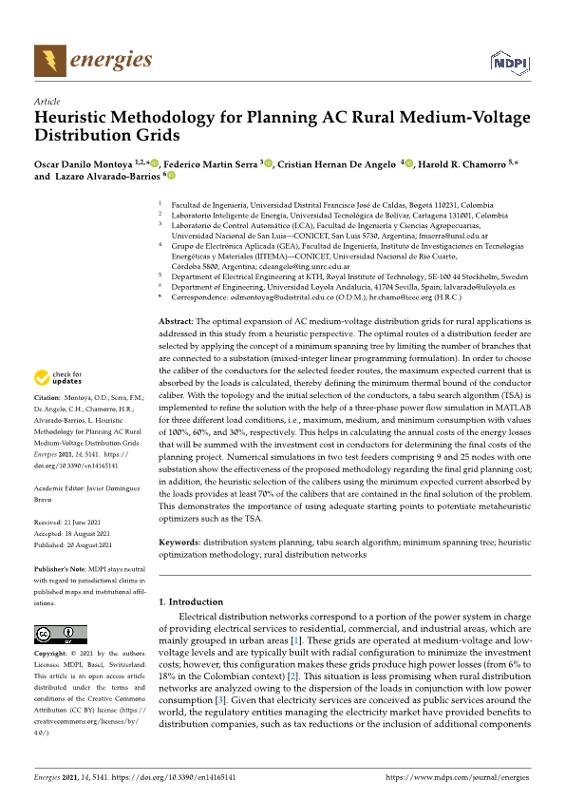Abstract
The optimal expansion of AC medium-voltage distribution grids for rural applications is addressed in this study from a heuristic perspective. The optimal routes of a distribution feeder are selected by applying the concept of a minimum spanning tree by limiting the number of branches that are connected to a substation (mixed-integer linear programming formulation). In order to choose the caliber of the conductors for the selected feeder routes, the maximum expected current that is absorbed by the loads is calculated, thereby defining the minimum thermal bound of the conductor caliber. With the topology and the initial selection of the conductors, a tabu search algorithm (TSA) is implemented to refine the solution with the help of a three-phase power flow simulation in MATLAB for three different load conditions, i.e., maximum, medium, and minimum consumption with values of 100%, 60%, and 30%, respectively. This helps in calculating the annual costs of the energy losses that will be summed with the investment cost in conductors for determining the final costs of the planning project. Numerical simulations in two test feeders comprising 9 and 25 nodes with one substation show the effectiveness of the proposed methodology regarding the final grid planning cost; in addition, the heuristic selection of the calibers using the minimum expected current absorbed by
the loads provides at least 70% of the calibers that are contained in the final solution of the problem. This demonstrates the importance of using adequate starting points to potentiate metaheuristic optimizers such as the TSA.














